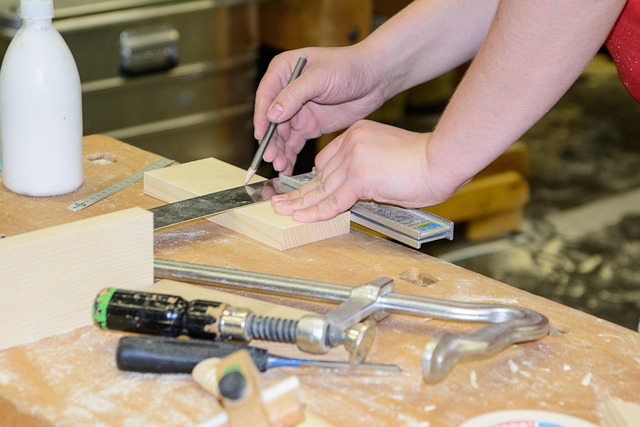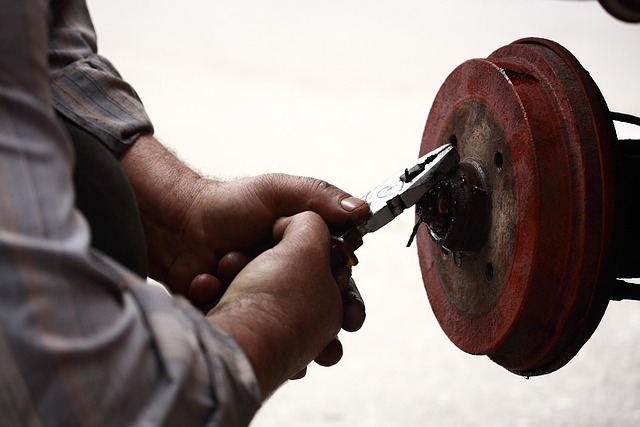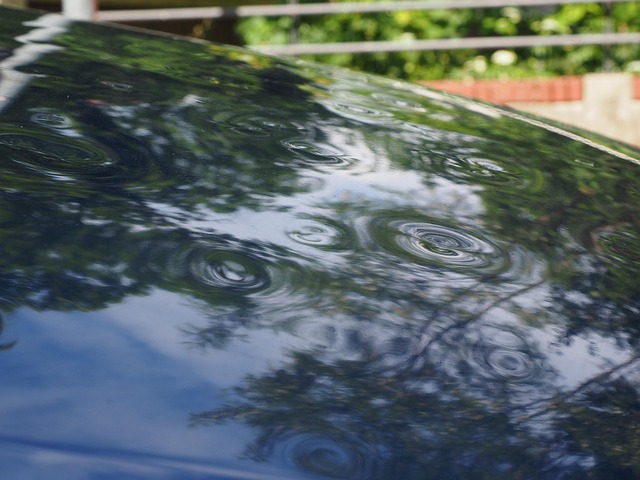Exotic Car Body Repair: Advanced Techniques for Precision and Quality
Exotic car body repair presents unique challenges due to meticulous craftsmanship, intricate designs…….
Welcome to an in-depth exploration of the intricate world of exotic car body repair, a specialized craft that demands precision, expertise, and a deep appreciation for automotive aesthetics. In this article, we embark on a journey to unravel the complexities, significance, and future prospects of this niche yet vital sector. As the global market for luxury and performance vehicles continues to flourish, the art of restoring and repairing exotic car bodies has evolved into a sophisticated discipline, attracting enthusiasts, professionals, and investors alike. Get ready to delve into the fascinating details that make exotic car body repair not just a service but an experience.
Exotic car body repair is a specialized automotive service focused on restoring and revitalizing the exterior of high-end, luxury, or performance vehicles. These cars, often referred to as ‘exotics,’ are typically characterized by their unique designs, advanced engineering, and premium pricing. The scope of this craft encompasses various tasks, from minor cosmetic repairs to extensive structural restoration, ensuring that these exquisite machines not only look their best but also maintain their optimal performance and value.
The process involves a multifaceted approach:
Panel Replacement: This entails swapping out damaged or outdated body panels with new ones, ensuring perfect fitment and alignment. Modern exotic cars often feature complex body designs, making this a precise endeavor.
Paint Restoration: Restoring the original finish is an art in itself. Technicians use specialized equipment and paints to match the vehicle’s exact color specifications, achieving a flawless appearance.
Body Alignment: Precise alignment ensures that all panels are correctly positioned, maintaining the car’s structural integrity and aesthetic appeal. This often involves advanced computer-aided systems for precise measurements.
Structural Repair: In cases of significant damage, structural repair techniques are employed to reinforce and restore the vehicle’s frame and body. This may include welding, metal fabrication, or the use of composite materials.
Customization: Some repairs go beyond restoration, incorporating custom designs and modifications to create unique aesthetics, catering to the individual preferences of car owners.
The roots of exotic car body repair can be traced back to the early 20th century when automotive design began to push boundaries. As high-performance vehicles emerged, so did the need for specialized repair services. The post-World War II era saw a surge in the popularity of sports cars and luxury automobiles, leading to the development of more sophisticated repair techniques. Over time, as exotic car manufacturers like Ferrari, Lamborghini, and Porsche gained prominence, the demand for expert body repair grew, fostering the evolution of this craft into a highly skilled profession.
Exotic car body repair has transcended geographical boundaries, becoming a global phenomenon. The luxury automotive market is a truly international affair, with manufacturers and enthusiasts spanning continents. This has led to the establishment of specialized repair centers in major cities worldwide, each adapting their services to local preferences and standards.
Growing Market: The demand for exotic car body repairs is on the rise globally, fueled by increasing luxury vehicle sales and a growing appreciation for automotive customization.
Regional Specialization: Different regions have developed unique specialties. For instance, Europe is known for its rigorous restoration standards, while Asia has centers renowned for their expertise in rare and classic cars.
Technology Adoption: The industry has embraced technological advancements, with online platforms offering specialized services and global supply chains ensuring the availability of rare parts.
In North America, exotic car body repair is a thriving industry, supported by a robust economy and a passion for high-performance vehicles. The United States, in particular, is home to several world-class repair facilities catering to a diverse range of brands. Similarly, Europe’s automotive heritage makes it a hub for restoration, with countries like Germany and Italy leading the way in precision engineering. Asia, with its thriving luxury car market, has seen the rise of specialized workshops offering unique customization options.
The exotic car body repair market is characterized by high competition and specialized services. With the increasing value placed on rare and classic vehicles, the demand for expert restoration has never been higher. This dynamic market is driven by:
Luxury Car Owners: High-net-worth individuals who invest in exotic cars as status symbols and appreciate the value of meticulous maintenance.
Collector Enthusiasts: Those passionate about rare and classic cars, often willing to spend on restoring their cherished vehicles to their original glory.
The economic impact of this sector is significant:
High Revenues: Specialized repair centers can command premium prices for their services due to the specialized nature of work and the value placed on exotic cars.
Job Creation: This industry supports a range of skilled jobs, from technicians and paint specialists to project managers and business administrators.
Economic Growth: The sector contributes to local economies, with businesses supporting related industries like car parts suppliers, detailing services, and luxury retail.
While the market is robust, it also presents challenges:
Part Availability: Sourcing rare or discontinued parts can be difficult and expensive, impacting repair timelines and costs.
Competition: The rise of online repair platforms has increased competition, requiring traditional shops to enhance their services and pricing strategies.
Customer Expectations: Modern car owners expect fast turnaround times and flawless results, putting pressure on repair facilities to deliver exceptional service.
Technological advancements have revolutionized exotic car body repair, improving efficiency, precision, and the overall customer experience:
Computer-Aided Design (CAD): CAD software allows for precise measurements, design modifications, and virtual testing, streamlining the planning process.
Laser Technology: Laser cutting and welding offer unparalleled accuracy in panel replacement, ensuring seamless fits and structural integrity.
Advanced Paints and Coatings: New paint systems provide better durability, scratch resistance, and a wider range of color options, enhancing restoration outcomes.
Digital Imaging and 3D Scanning: These technologies enable detailed digital records of vehicles, facilitating remote consultations and ensuring accurate repairs.
These innovations have had a profound effect:
Enhanced Precision: Modern tools allow for microscopic adjustments, resulting in superior body alignment and finish quality.
Reduced Repair Times: Advanced equipment and streamlined processes have significantly cut repair durations without compromising accuracy.
Customized Solutions: Technology enables the creation of tailored repairs and modifications, catering to individual owner preferences.
The future holds even more promise:
Autonomous Repair Robots: Artificial intelligence-driven robots could assist in routine tasks, increasing efficiency and reducing labor costs.
Biomimetic Materials: Inspired by nature, these materials offer lightweight, durable solutions for structural repairs, improving vehicle performance.
Virtual Reality (VR) Training: VR can revolutionize technician training, providing immersive learning experiences and ensuring a skilled workforce.
The exotic car body repair industry operates within a framework of legal and regulatory guidelines designed to protect consumers, ensure quality, and maintain safety standards:
Vehicle Safety Standards: Repairs must comply with regional safety regulations, ensuring structural integrity and adherence to crash test requirements.
Environmental Regulations: Proper disposal of waste materials, especially hazardous substances, is mandatory, promoting sustainable practices.
Consumer Protection: Legal safeguards are in place to protect customers from unethical practices, ensuring fair pricing and quality service.
These policies have a direct influence on the industry:
Licensing and Certification: Technicians and repair facilities may require specialized licenses or certifications, setting standards for competence.
Insurance Requirements: Businesses must carry insurance to cover potential liabilities arising from repairs, providing consumer protection.
Export and Import Controls: Regulations govern the movement of rare vehicles and parts across borders, impacting international trade.
Despite its success, the exotic car body repair industry faces several challenges:
Skill Gap: The demand for skilled technicians often exceeds supply, leading to a skill gap that can impact service quality.
Part Availability: Sourcing original equipment manufacturer (OEM) parts, especially for vintage cars, remains a challenge, impacting repair timelines and costs.
Customer Expectations: Modern car owners’ high expectations regarding turnaround times and finish quality put pressure on repair facilities.
Addressing these issues requires strategic approaches:
Training Programs: Developing comprehensive training initiatives can help bridge the skill gap, ensuring a competent workforce.
Global Part Sourcing Networks: Establishing international partnerships for part procurement can improve availability and reduce costs.
Transparent Communication: Open dialogue with customers regarding timelines and potential challenges enhances trust and management of expectations.
A renowned restoration shop in Italy took on the challenge of restoring a 1967 Ferrari 275 GTB. The car had suffered severe rust damage and required extensive structural repair. Using laser welding technology, the team precisely repaired the chassis and body panels. Advanced paints replicated the original finish, while custom interior trim added a modern touch. This project showcased the combination of traditional craftsmanship and cutting-edge technology in exotic car restoration.
A customer approached a specialist in Japan with a unique request—to customize their Lamborghini Aventador to resemble a fictional character from a video game. The shop embraced this creative challenge, designing and installing a bespoke body kit that transformed the supercar into an eye-catching one-of-a-kind vehicle. This case highlights the industry’s ability to blend artistic vision with automotive engineering.
A luxury car rental company faced a crisis when their fleet of exotic vehicles was damaged in a natural disaster. They partnered with an experienced repair facility, which quickly mobilized resources and expertise. Utilizing temporary off-site facilities, the team restored numerous cars to their original condition within a strict timeframe. This collaboration demonstrated the industry’s resilience and ability to handle large-scale recovery operations.
The future of exotic car body repair is filled with exciting possibilities:
Sustainable Restoration: With growing environmental consciousness, eco-friendly practices will gain prominence, focusing on recycled materials and efficient waste management.
Digital Twin Technology: Creating digital replicas of vehicles could enable remote consultations, virtual repairs, and enhanced customer engagement.
Artificial Intelligence (AI) Integration: AI algorithms can analyze repair data, predict issues, and assist in decision-making, improving efficiency and accuracy.
Several sectors offer significant growth potential:
Classic Car Restoration: The market for restoring vintage and classic cars is thriving, driven by a passion for automotive history.
Electric Vehicle (EV) Repairs: As EV popularity grows, specialized repairs for these vehicles will be in high demand, requiring unique skills and knowledge.
Global Remote Services: With advanced technology, remote repair consultations and guidance could become common, connecting experts with clients worldwide.
In conclusion, exotic car body repair is a captivating and highly skilled profession that plays a vital role in the automotive industry. From its precise techniques to technological advancements, this craft has evolved to meet the demands of a global, luxury market. As we look ahead, the future promises exciting innovations, from sustainable practices to AI integration, shaping the way exotic cars are restored and maintained.
The impact of this industry extends beyond mere vehicle repairs; it fosters a community of enthusiasts, supports specialized businesses, and contributes to economic growth. With its intricate details and passion for perfection, exotic car body repair stands as a testament to human ingenuity and our enduring fascination with the beauty and performance of automobiles.
Q: How do I know if my exotic car needs body repair?
A: Signs may include dents, scratches, rust spots, or an uneven finish. Regular maintenance and inspections can help prevent minor issues from becoming major repairs.
Q: What makes exotic car body repair different from regular auto body work?
A: Exotic cars often have complex designs, high-performance materials, and intricate details that require specialized tools and techniques for precise restoration.
Q: Can I perform exotic car body repairs myself?
A: While some basic maintenance tasks are doable, professional repairs are recommended due to the advanced skills, equipment, and knowledge required.
Q: How do I choose a reputable exotic car body repair shop?
A: Look for certified technicians, positive customer reviews, and a proven track record. Ensure they have experience with your specific vehicle make and model.
Q: Are there any legal requirements for exotic car repairs?
A: Yes, vehicles must comply with regional safety and environmental standards. Repairs should be carried out by licensed professionals to ensure legal compliance and quality.

Exotic car body repair presents unique challenges due to meticulous craftsmanship, intricate designs…….

Exotic car body repair demands specialized skills and advanced techniques due to these vehicles'…….

Exotic car body repair demands specialized skills for intricate designs and high-quality materials……..

Exotic car body repair is a specialized art requiring precision and expertise due to these vehicles&…….

Exotic car body repair demands a meticulous approach. Professionals conduct visual inspections and u…….

Exotic car body repair is a specialized art requiring expert skills to maintain both the aesthetic b…….

Using Original Equipment Manufacturer (OEM) parts for exotic car body repair is vital for achieving…….

Exotic car body repair is a specialized field demanding advanced expertise due to intricate designs,…….